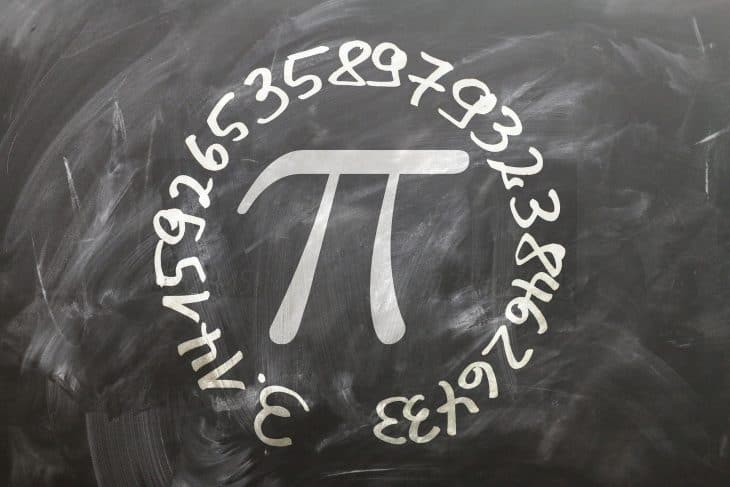
There is definitely more behind the 3.14 digits of Pi. Make sure not to miss these Pi facts for the world! These Pi facts will floor you, for sure.
- Pi is a mathematical symbol that represents the circumferential ratio of a circle to its diameter.
- Its value is about 3.14159.
- The “π” symbol, which means “periphery” or “perimeter,” describes a circle’s circumference.
- Pi is also known as “Archimedes’ constant,” “the circular constant,” or “Ludolph’s number.”
- It is impossible to find the true value of Pi as it is an irrational number.
- This mathematical constant is the most recognised one in the world.
- Scholars also find Pi as the most significant and clever number in the entirety of mathematics.
- Welsh mathematician William Jones introduced the Greek letter π in 1706, and it has been used by mathematicians ever since.
- Swiss mathematician Leonhard Euler then adopted the symbol and popularised its usage.
- French mathematician Georges Buffon formulised a π calculation derived from probability.
- The π (Piwas) is the 16th letter in the Greek alphabet.
- Its counterpart letter p is the 16th letter in the English alphabet as well.
- Evidence reveals that the design of the pyramid of Giza embodies the Pi, Phi and the Pythagorean Theorem.
- The first 10 million decimal places of Pi show at least six repetitions of the first 6 digits of Pi, 314159.
- Mathematicians vote that saying a circle has infinite corners is more accurate than assuming a circle has none at all.
- Add up the first 144 digits of Pi and the answer is 666, same with 144 = (6+6) x (6+6). Scholars call 666 the “the mark of the Beast.”
- Alfred Hitchcock’s film Torn Curtain and in The Net which stars Sandra Bullock utilised the Pi as the secret code.
- Calculating the value of Pi serves as a digital cardiogram or stress test to indicate a computer processor’s activity level.
- Father of Calculus Isaac Newton was able to compute at least 16 decimal places of the value of Pi.
- Italian artist Leonardo da Vince also tried to estimate the value of Pi by squaring the circle.
Pi Facts Infographics
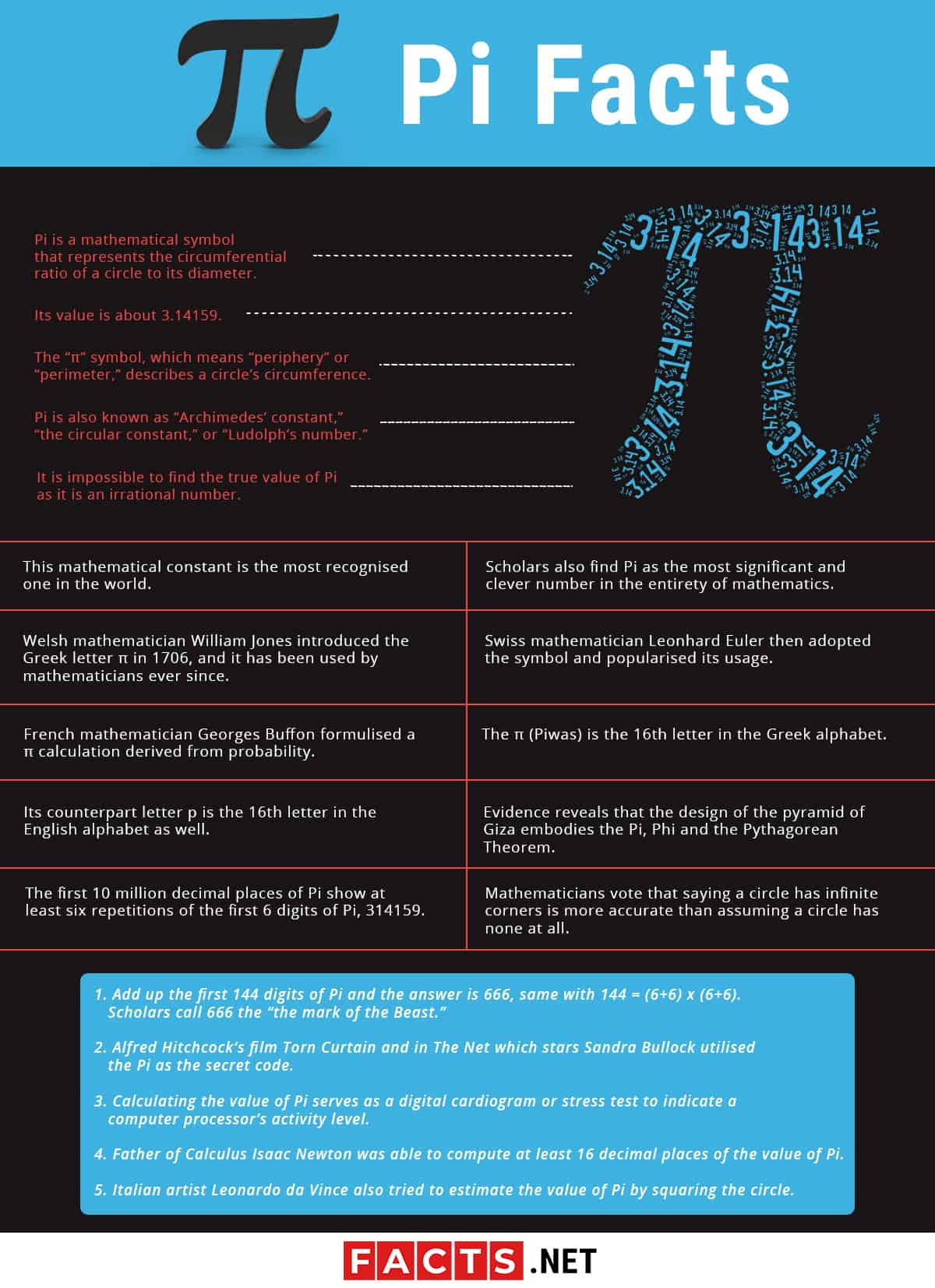
Pi (π) is almost 4000 years old.
Despite its olden age, all the number of seconds in its life still could not come close to the approximate actual value of π when calculated to that number of places.
It is impossible to accurately know the value of Pi.
Because π is an irrational number, its digits go on endlessly in a random sequence. Hence, exactly measuring the circumference or area of a circle is not possible as well.
The digits of Pi have now been computed to over a trillion digits past its decimal point.
It would still extend infinitely without any specific pattern or repetitions since it is an irrational and transcendental figure. Despite only needing a few digits for common calculations, people still find it challenging and fun to memorise and calculate more digits on its tail.
Mathematical facts about the Great Pyramid show that the computation of its dimensions by Pi only has a 0.1% error.
English writer John Taylor proposed that the design of the Great Pyramid of Khufu in Giza intentionally utilised the concept of π. His discovery demonstrates how the division of the Pyramid’s perimeter by height is almost equivalent to the value of Pi.
Pi’s relation to the Great Pyramid of Giza drew the attention of Egyptologists and mystic followers for centuries.
They also found that the Pyramid’s vertical height and the base’s perimeter share the same connection with that of a circle’s radius and its circumference.
The number 360 could be found in the 359th digit position in π.
Some mathematicians find delight in this fact given that a circle has 360 degrees and that this shape has an intimate connection to Pi.
“Squaring the circle” to understand Pi is one method that intrigued mathematicians.
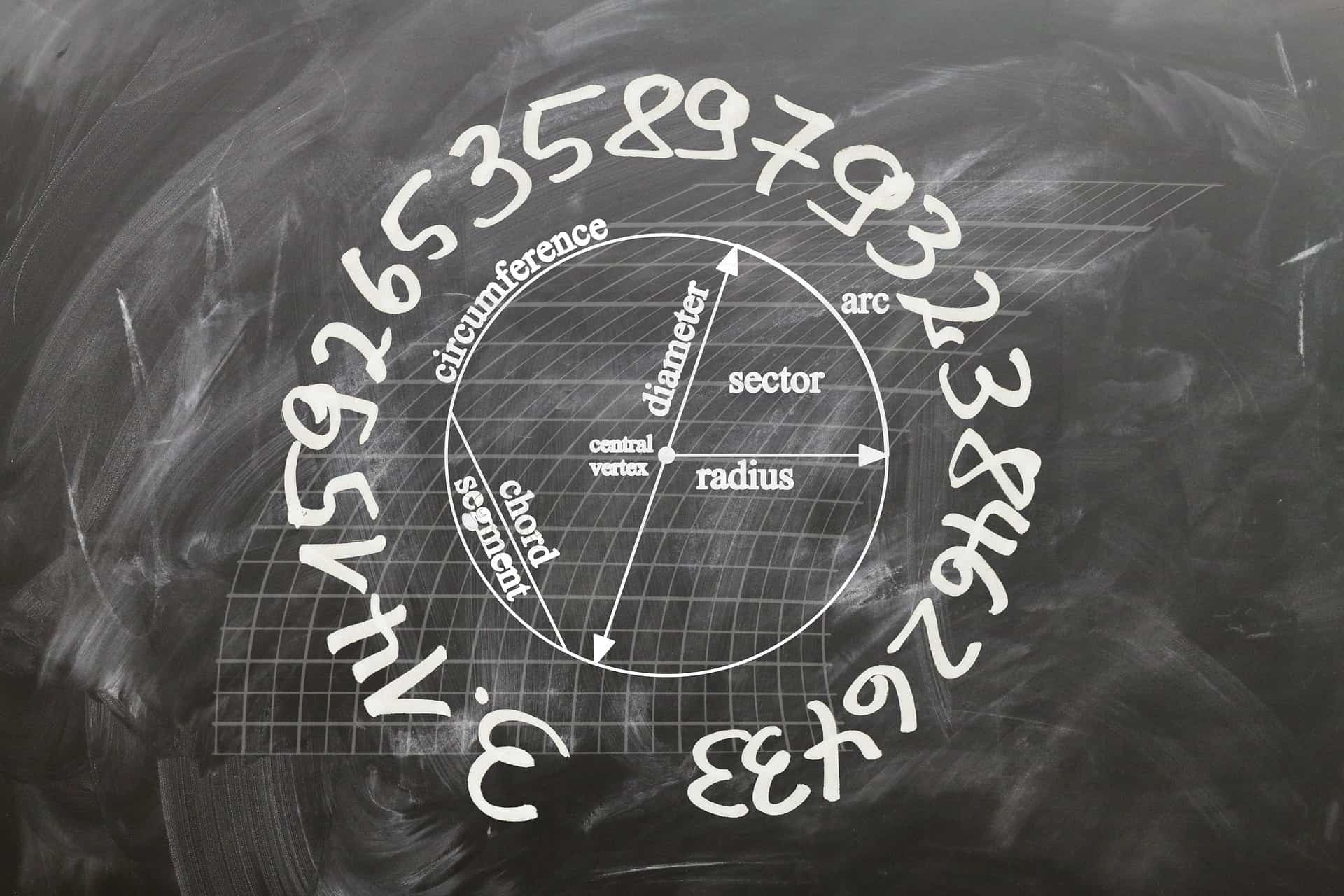
From their traditional views, the circle shape signifies the infinity, immeasurability, and spirituality of the world. Whereas the square shape stands as a representation for the manifest, measurable and comprehensive world.
The number 5 appears the most times in the first million decimal places of Pi with 100,359 repeats.
In second comes 4s with 100,230, 3s with 100,229, 9s with 100,106, 2s with 100,026, 8s with 99,985, zeros with 99,959, 7s with 99,800, 1s with 99,758, and the least are the 6s with only 99,548.
Pi used to have a sentence-long name before the emergence of the symbol π.
Mathematicians would roughly describe Pi before as “quantitas, in quam cum multipliectur diameter, proveniet circumferential,” meaning “the quantity which, when the diameter is multiplied by it, yields the circumference.”
The sequence 123456 does not appear in the first million digits of Pi.
However, there were eight sequences of 12345s and three of them have another number 5 after. The 012345 order also appeared twice, both followed by another number 5 as well.
Other uses for Pi emerged in the 17th century.
Pi breaks free from the usual circle and proceeded to cover other functions for curves like arches and hypocycloids. It started with the discovery that Pi could also denote their areas. By the 20th century, Pi also debuted in fields like that of probability, number theory, and chaos theory.
The physical Earth proved the precision of the Pi.
Calculating the circumference of the Earth by only using π to the 9th digit would result in only a ¼-inch error for every 25,000 miles.
Reciting the value of Pi would take over a decade to finish.
Given all 6.4 billion of its known figures, the digits of π would take you about 133 years of nonstop recitation.
An ancient mathematician’s method of computing Pi is by adding more sides to a polygon until it closes in on the area of a circle.
Greek mathematician Archimedes, for one, made use of a polygon with 96 sides. On the other hand, Chinese mathematician Liu Hui first merged 192 sides before ending up with 3,072 sides to narrow Pi down to 3.14159. His son, Tsu Ch’ung even raised the bar up to 24,576 sides for the calculation and gained results with only 8 million/1% discrepancy from the current value of π.
Archimedes of Syracuse made the first calculation of π and was named as the one who discovered Pi.
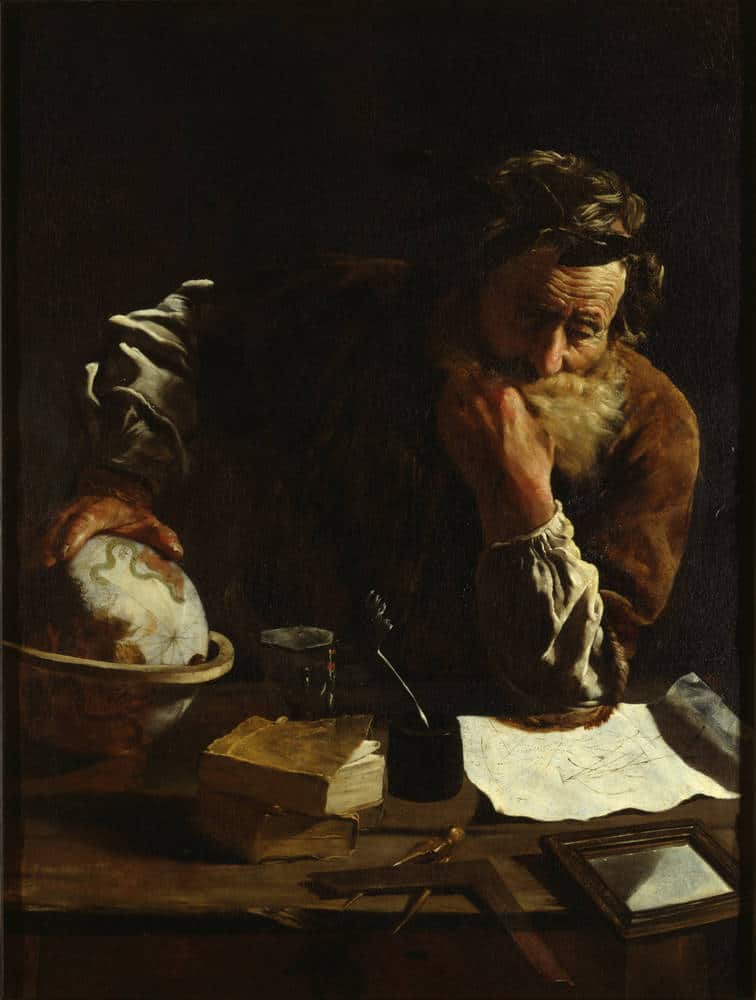
It might as well be the reason why he is hailed one of the greatest mathematicians of the olden age. He used the Pythagorean Theorem to estimate a circle’s area as well as to find the areas of two polygons – the one containing the circle and the one inside the circle. However, Archimedes admitted that he only reached the approximate value and not the exact value of π.
Zu Chongzhi was able to use a similar approach despite being unaware of Archimedes and his method.
The Greek mathematician’s book was lost so his works did not reach far. Still, the Chinese mathematician and astronomer likewise estimated the circle’s circumference ratio as 355/113.
The history of Pi traces back to the ancient Babylonians.
They took 3x the square of a circle’s radius to calculate its area which then gave them 3 as the value of Pi. A Babylonian tablet circa 1900-1680 BC even registered a much closer estimation of 3.125 for π.
The Rhind Papyrus of 1650 BC registers the first use of the “squaring the circle” method to compute π.
The ancient document also disclosed insights into ancient Egypt mathematics. Back then, the Egyptians were able to measure the area of a circle using a formula that yielded a rough value of 3.1605 for π.
Devotees consider Pi as divine.
Mathematical terms hail the figure as “transcendental.” Mathematician Johann Lambert even provided proof of the irrationality of Pi by supplying the tangent of x with a continued fraction.
The first 36 digits of Pi is called the Ludolphine Number.
It is named after German-Dutch mathematician Ludolph van Ceulen who gave most of his life into the calculation of the range. Legend has it that these numbers were engraved on his tombstone that is now lost.
For years, William Shanks worked only by hand to get the first 707 digits of π.
Unfortunately, the British mathematician was still an amateur and made an error after the 527th place. All the digits beyond that point were then considered all wrong.
In 2002, a Japanese scientist was able to find 1.24 trillion digits of π with the help of the Hitachi SR 8000 computer.
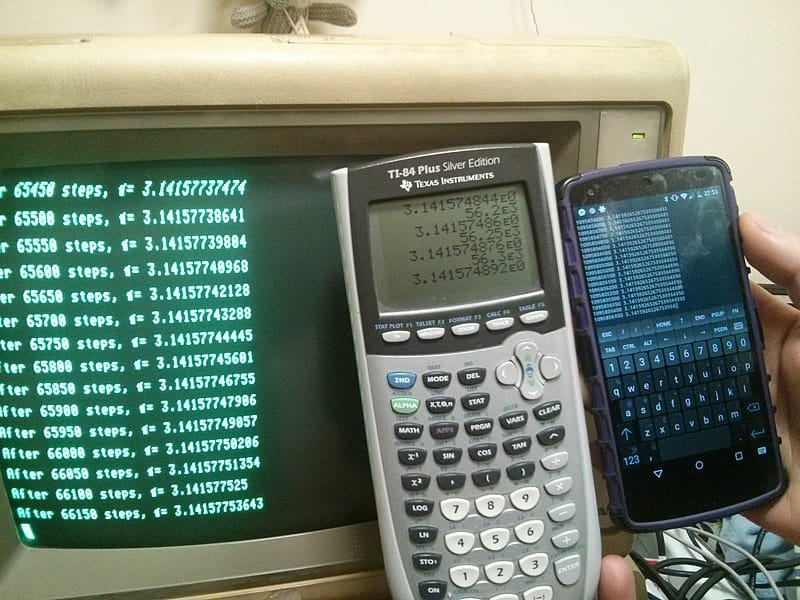
It may have broken previous records, but only until its own defeat in 2010. A Japanese engineer together with an American computer wizard used 20 external hard disks, desktop computers, and intelligent minds and was able to reach up to 5 trillion digits.
Persian scholar Al-Khwarizmi made his calculations using 3.1416 as his value of π.
His name birthed the term “algorithm.” Moreover, his syllabus Kitab al-Jabr wal-Muqabala, which translates to The Book of Completion Concerning Calculating by Transposition and Reduction, derived the word “algebra.” It came from the al-Jabr part which means “completion” or “restoration.”
The Chinese were on the lead in the search for the digits of Pi.
Many mathematicians believe that the Chinese language is more favorable towards mathematical computations. Hence, Chinese mathematicians gained the front in the Pi game due to their decimal notations and having a symbol for the number zero. Meanwhile, European mathematicians were only able to use the zero symbol in the late middle ages wherein they teamed up with Indian and Arab wisdom.
March 14 is the official day of celebration for Pi day.

American physicist Larry Shaw, also suitably known as the Prince of Pi, initiated the recognition at San Francisco’s Exploratorium.
The exact right time for the celebration at Pi Day is at 1:59 pm.
At 3/14 1:59 pm of each year, math enthusiasts have an annual opportunity to recite the infinite digits of π. They gather to talk about math and eat pie.
The Exploratorium Science Museum holds a circular parade every Pi Day.
Participants of the parade each hold one digit of the number Pi. The United States did not honor the occasion before as it did when Congress passed Resolution 224. They aimed to encourage higher levels of enthusiasm for math, also science.
Organisations host 3.14-mile runs in anticipation of the Pi Day.
It is due to the Pi number being near equal to 5K (exactly 3.10686 miles), a standard distance for fun runs. Among the cities that celebrate it are Green Bay, Wisconsin; Tempe, Arizona; Newark, Delaware; South Bend, Indiana, and Monroe, Connecticut.
Math fanatics from other foreign countries choose July 22 as their Pi Day.
Most countries outside the US use the format day/month to write dates. This style writes July 22 as 22/7 which is the value of Pi in fraction form.
Pi has a customised cologne.
Givenchy released a men’s cologne and named it after Pi. The French luxury fashion house centered its marketing on the sexual appeal that intelligent men with vision possess.
The π has an entire language dedicated to it and it is called Pilish.
Pi lovers created a dialect wherein the letters in the succession of words have the same number of letters as there is in the digits of Pi. American mathematician Mike Keith wrote “Not a Wake,” an entire book written in Pilish.
A “Piem” is a poem in the Pilish language.
The composition of a piem follows the mechanics of the Pilish language. Given that π = 3.14159, the first word of the poem should have 3 letters while the next should have 1.
Japanese game designer Hiroyoki Gotu was able to memorise 42,195 places of the digits of Pi.
He set the record in 1995. From there, scholars hypothesised that the Japanese language is the most suitable language for the memorisation of number sequences.
Akira Haraguchi beat the record in 2006 with 100,000 decimal places recited.
He landed on the 83,431st digit on his first attempt in 1995. The Japanese mental health counselor recited for 16 hours at a public hall in Kisarazu, east of Tokyo.
The one who holds the Guinness World Record in the Pi game is Rajveer Meena.
He was only able to memorise 70,000 digits, and the recognition took place on March 21, 2015, at the VIT University, Vellore, India. The recitation lasted for about 10 hours throughout which he wore a blindfold.
The value of Pi inadvertently tested an FBI agent’s intellectual acuity.
Defense attorney Robert Blaiser and an FBI agent engaged in arguments during the infamous O.J. Simpson trial. The Pi-related topic apparently aimed to expose the FBI agent’s flaws.
The concept of Pi held the key to the universe in a novel.
American astronomer and author Carl Sagan wrote a novel entitled Contact. In it, scientists successfully solve enough value of π to uncover hidden messages from the creators of the human race. Humans would then gain access to deeper levels of universal awareness.
Pi drove a man mad in a movie.
The movie Pi: Faith in Chaos, or simply π, was directed by American filmmaker Darren Aronofsky. His film follows the story of a man’s attempt to obtain simple Pi answers and the universe and how the search escalated to his mental health. The fascinating movie won the Directing Award from the 1988 Sundance Film Festival.
No evil character could beat the π.
A Star Trek episode entitled “Wolf in the Fold” showed how Spock halted an evil computer from wrecking havoc. All he did was challenge the machine to calculate the last digit of Pi, and victory came with an explosion.
The Pi was mentioned in the Bible.
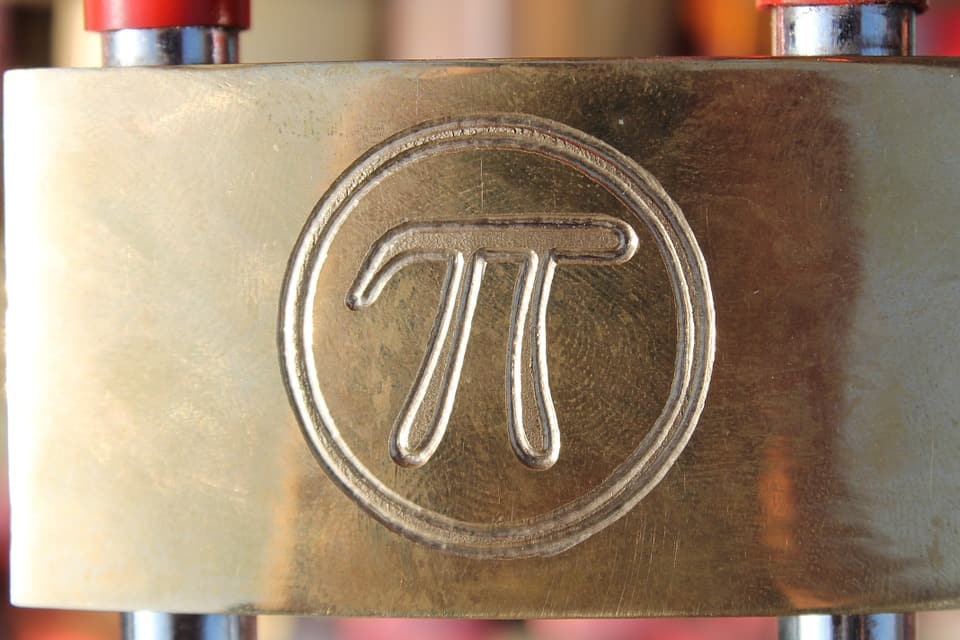
1 Kings 7:22 described the altar inside the temple of Solomon, stating, “And he made a molten sea of ten cubits from brim to brim . . . and a line of thirty cubits did compass it round about.” Scholars interpreted that this verse means 3 is the value of Pi.
Meanwhile, a poem condemned the act of squaring a circle to find the value of Pi.
In the poem “Upon the Translations of the Psalms by Sir Philip Sidney, and the Countess of Pembroke, His Sister,” author John Donne rebukes the method as an attempt to vindicate God. He said, “Eternal God—for whom whoever dare Seek new expressions, do the circle square, And thrust into straight corners of poor wit Thee, who art cornerless and infinite.”
The obsession with π is a normal part of human life.
The value of Pi serves as a hunting ground for patterns that humans love very much to find.
Pi Day is as good as to be called Genius’s Day.
German theoretical physicist was born on Pi Day of 1879. Meanwhile, English theoretical physicist and author Stephen Hawking died on Pi Day of 2018. Other Pi Day-borns are music producer Quincy Jones, Apollo 8 astronaut Frank Borman, composer Johann Strauss, and actors Michael Caine and Billy Crystal.
The largest human π symbol was formed in Germany.
A school of 589 people set the record in 2014. Whereas the longest human line of Pi digits was set in Todi, Italy in 2017. The city mayor held the first number (3), and 520 teachers and students followed suit, each with a digit of Pi in hand.
One of the most puzzling unsolved mysteries in the world is a crop circle with reference to the first 10 digits of π.
A 150-diameter crop circle suddenly came out of nowhere by Barbury Castle in 2008. The phenomenon could be seen near Wroughton’s English village. What made it more interesting is how an astrophysicist discovered that the image depicted a code that represents the first 10 digits of π.
Pi also has haters.
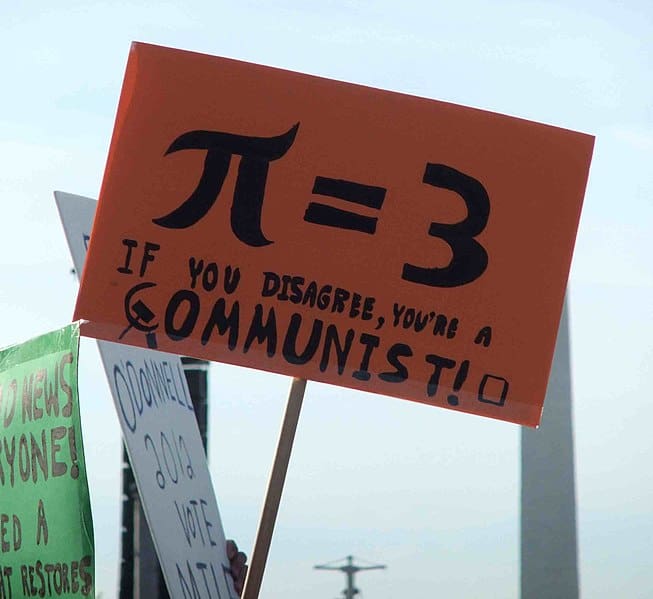
The famed symbols did not only garnered fans; it gained doubters along the way as well. Some math enthusiasts argued that “tau,” the number equivalent to twice of Pi, also deserve the same notable place in mathematics as Pi. Tau’s approximate value is 6.28, and it refers to the relationship between a circle’s circumference and radius. Hence, many believe that the one that has a more inherent mathematical value between the two is tau.
The old-fashioned way to compute for Pi includes the use of a ruler, a pencil, a protractor, a piece of string, and a can.
However, this method requires the actual roundness of the can. The accuracy of the result is also limited to the tester’s ability to loop the string around the circumference of the can. It goes the same when using a protractor to measure the diameter or radius using a ruler.
Geometry proposes a more accurate alternative for the computation of π.
First, the circle needs to be broken into multiple segments, then calculate the length of the side of the isosceles triangle. The sum of all the sides would generate an estimate of the π. More slices determine more accuracy.
Mathematicians still have yet to figure out the real nature of π.
No decisions are made yet whether Pi is a member of the normal numbers club or the numbers with the same frequency of digits. It means that the figures 0 through 9 would occur 10% of the time.
Trillions of digits of Pi and not all of them are really needed.
NASA engineers round π off to only 15 decimal places to calculate interplanetary trajectories. Moreover, computing for the size of the observable universe with only 39 digits of π would yield an answer which has no more than a hydrogen atom’s worth of discrepancy.
Pi facts sure are interesting! Hope these Pi facts helped you learn more about this magical series of numbers. Also, maybe you’d want to look into more Pi facts? If you see more, put those Pi facts you found in the comments!
Was this page helpful?
Our commitment to delivering trustworthy and engaging content is at the heart of what we do. Each fact on our site is contributed by real users like you, bringing a wealth of diverse insights and information. To ensure the highest standards of accuracy and reliability, our dedicated editors meticulously review each submission. This process guarantees that the facts we share are not only fascinating but also credible. Trust in our commitment to quality and authenticity as you explore and learn with us.
